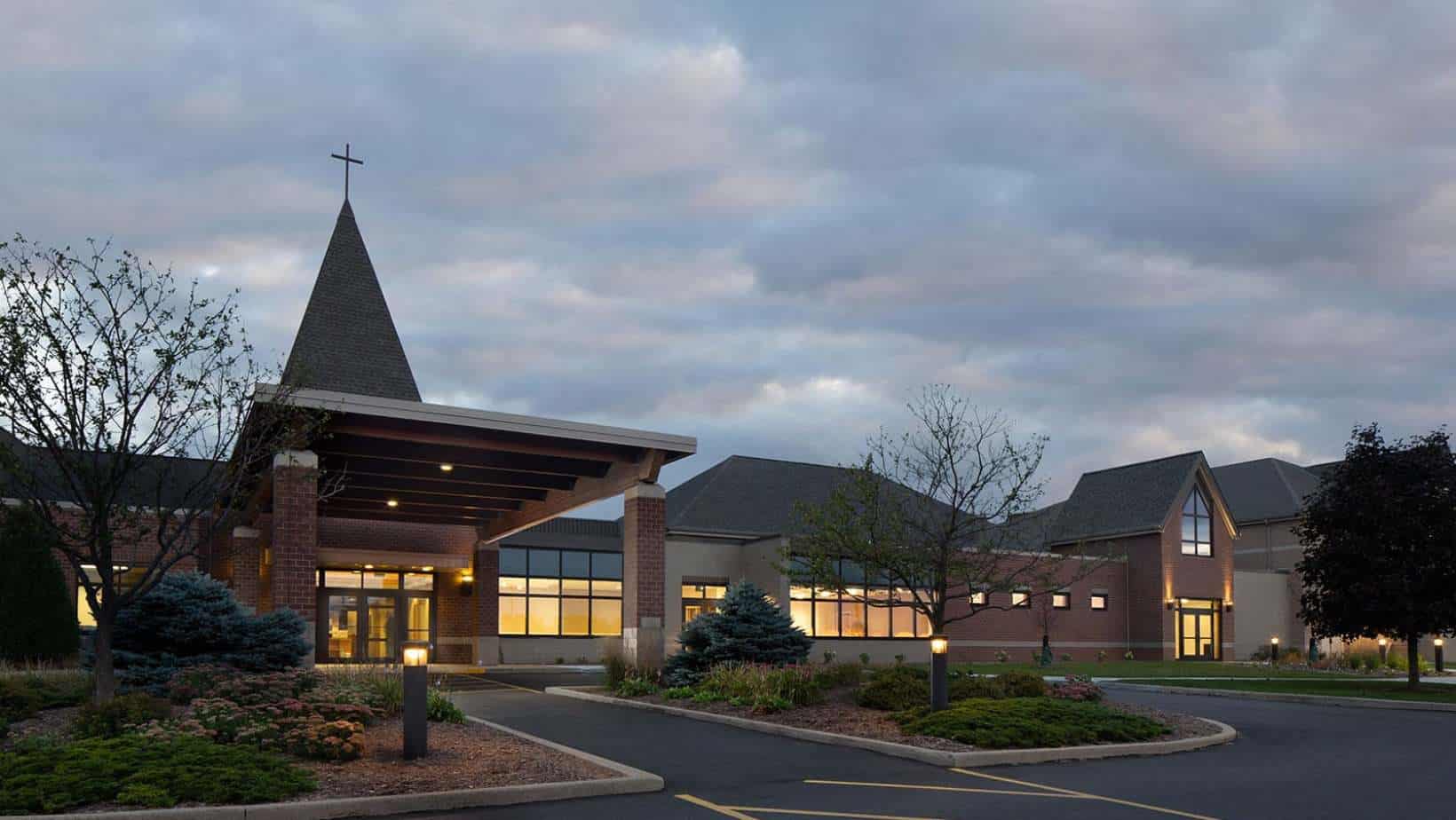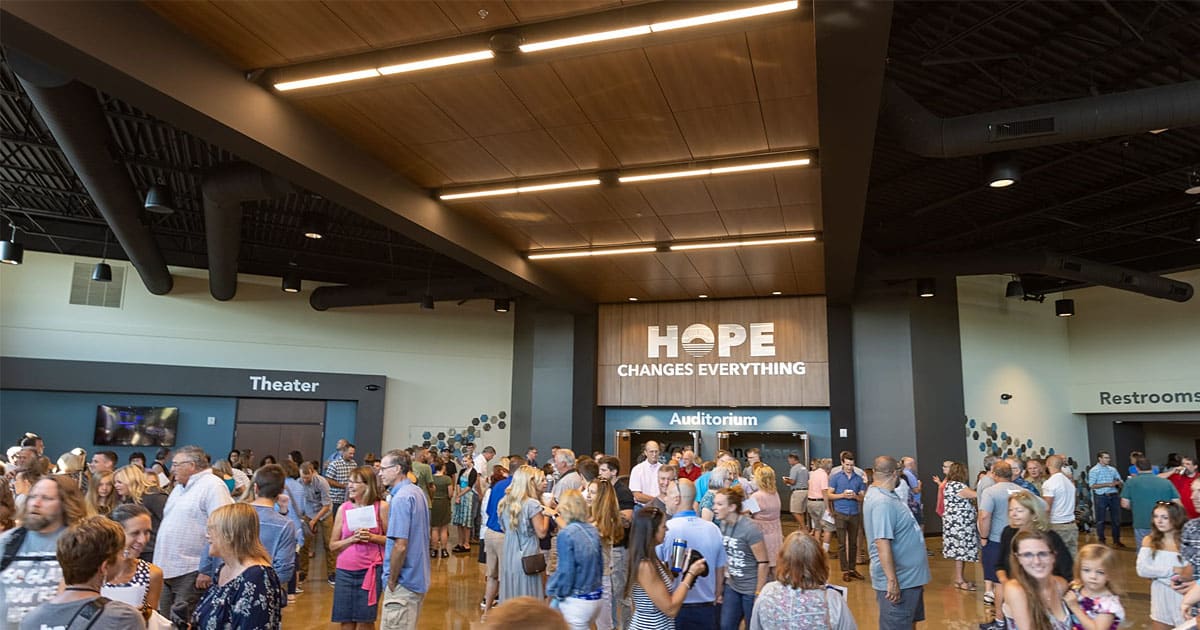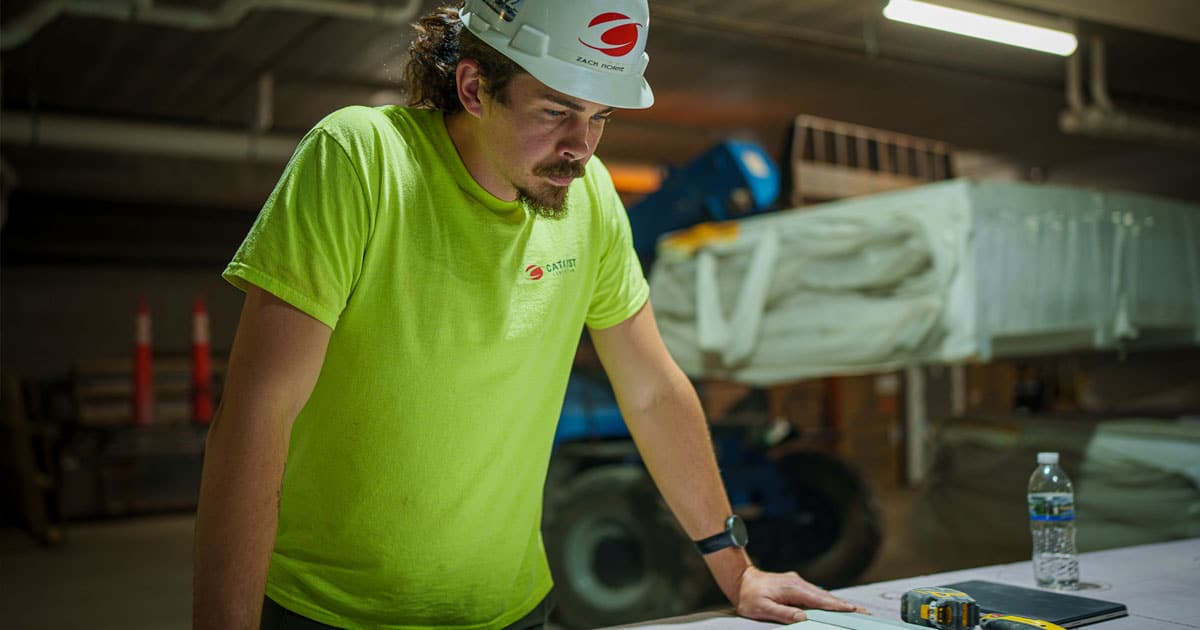Do you remember driving in new places before a GPS navigation system told you exactly what to do? If you were cautious, you’d track down a map at a gas station, or print one from the internet. Otherwise, you had to rely on the well-meaning, but less helpful directions from a friend.
They’d say, “Turn left by the big tree. “You can’t miss it,” they’d promise.
Inevitably, you’d miss it!
Even with the best of directions, you couldn’t possibly anticipate the amount of traffic, detours, or Sunday drivers. All of which could cause you to pivot and find an alternative route that may or may not get you to where you want to go.
If you’re considering a church construction project for the first time, you may feel like you have to navigate new terrain without any guidance from a GPS. Where do you start? When do you pivot? Who will you tell you when “you have arrived at your destination”?
Thankfully, with Catalyst Construction on your side, you can have the guidance you need to get your church construction project to the finish line. Our extensive experience in bringing a Godly calling to fruition on earth makes us a reliable source of guidance for your church-building project.
What is Your God-Given Vision?
Your mission is divinely inspired, so you should seek clarity on what God intends for your new structure.
Your building must be emotionally and strategically connected to your congregation’s individuals and families, aligned with your community’s unique culture, and meet their spiritual and social needs. Overall, the foundation of your church-building project lies within its purpose. Here are some visions we have come across in our work with church administration and religious leaders:
A Growing Congregation
Some church leaders have experienced growth within their community, so their need for increased seating, expanded gathering space, and additional kids or youth spaces may be the foundation of their project.
Hope Church in Summit, Wisconsin, had the vision to expand its outreach and create a welcoming environment for people who have given up on church and maybe on God. The result of their project, headed by Catalyst Construction, was a 26,000-square-foot building with a 700-seat auditorium, a Worship Center, classrooms, a gathering area, offices, and a wing devoted to children’s and teen activities.
Another need for expanded space could lie with the growing generations. Many churches dream of a facility beyond Sunday School, which requires special planning that considers safety, staff ratios, age-appropriate furniture, and activity supplies.
A traditional school component may also be necessary for a church project. Well-thought-out classrooms, lunch rooms, gymnasiums, and auditoriums should be considered when crafting your vision for early childhood to high school students.
Hosting Community Events and Conducting Outreach
As John 13:34 says, “A new command I give you: Love one another. As I have loved you, so you must love one another.” In leading with love and the right design, a church can serve as a base for community activities and outreach programs, extending its vision past worship services and finding new ways to utilize its building for programs that serve the public.
With proper design planning, your church can offer space for programs like tutoring, which has been shown to increase student achievements significantly. This allows you to be a part of the children’s success in your community.
Another unique idea to include in your design is a community garden or weekly food pantry to combat food scarcity, which affects 10.5 percent of US households; according to the USDA, churches provide essential resources and build a sense of belonging and mutual care. Several churches have redesigned internal spaces to house large play areas where parents can bring children during the week, allowing their kids to be in a safe space, create community, and have resources available that can lead to wanting to learn more about Jesus.
Through these outreach efforts, your church can impact your communities, offering support, hope, and a place of peace for many while increasing your visibility in your surrounding area.
Providing Worship Versatility
People worship differently, which has become apparent over the last few years. Some are even inspired by the pandemic. Adapting to varying needs for expression, from traditional services to contemporary gatherings, requires an imaginative construction style accessible to the congregation.
Collective worship is when a scheduled service is held, and a congregation gathers to pray, sing, and perform sacraments together. This typically calls for a large space with ample seating, whereas private worship requires a smaller, more intimate space, perhaps with dimmed lights and soft music playing.
You can also consider using the larger room for music services, plays, and dinners. Design this joyous space with a stage, a sitting/standing room with flexible seating, A/V equipment, high ceilings for acoustics, and lighting that matches the high energy of the worship experience.
Some community members, like senior citizens, the differently abled, or the immune-compromised, find it difficult to leave their homes but still want to honor God. Creating an online streaming space with digital viewing capabilities includes those who are not present but still believe in your vision and mission.
Identifying the core reason behind your project is not just important; it’s crucial. It serves as the foundation of every decision you make throughout the project, ensuring that every step is aligned with your mission and vision.
Anticipate Challenges
Anticipating and addressing potential obstacles hindering your project is a significant part of strategic planning. Here are some examples of challenges that may arise:
- Poor funding: Finances are one of the most significant challenges in any construction project. Detailed preparation is key to a successful journey, whether unexpected costs, lack of donations, or loan denials.
- Permit or zoning issues: Permits and zoning regulations can be complex and time-consuming, causing delays and confusion.
- Design changes: Design choices can transform your church from a building to a home for your congregation, so be prepared for any budget constraints or personal objections from key decision-makers.
- Lack of communication: A construction project of this size involves many personalities. Ineffective communication among the project members, leadership, and the community can lead to misunderstandings, delays, and unhappiness with the final result.
Preparing for potential hurdles and seeking guidance is not just a suggestion but a strategic move. It will best prepare you to address any challenges, ensuring unexpected obstacles do not derail your mission.
Develop a Budget
Every construction project needs a budget to be a success. It’s easy for costs to “add up,” especially when it comes to little details that weren’t planned for originally, such as design revisions, fluctuation in material costs, unexpected land formations, or weather delays.
Here are some questions you can ask yourself that may help you shape your budget:
What Resources Are Available to You?
If your church owns vacant land not currently being used, selling this land can give your project a substantial cash injection. This one-time influx of funds can be used to address immediate financial needs, such as funding your project. However, before considering a sale, hire a professional to conduct a market analysis to understand the value of the land.
How Much Can You Borrow?
This is heavily dependent on your congregation’s comfort level for debt. For example, Proverbs 22:7 states that the borrower is a “slave to a lender.” However, Proverbs 29:18 says that if people have no vision, they will perish.
Establishing a faith-driven steering committee to decide between these two schools of thought is the best way to make the right financial decision for your project. This committee will act as an authority in many choices and be a fair representation of your church community.
How Will You Fundraise?
Fundraising, or capital campaigning, is a great way to give your congregation a sense of ownership in building their future place of worship. Remember that these efforts can go beyond the typical bake sale and craft show. Think outside the box and consider community workshops, musical performances, matching fit challenges, or social media crowdfunding.
Hire the Right Contractors
Hiring the right contractors is crucial in turning this dream into a reality. It’s not just about finding talented individuals; it’s about ensuring they understand your vision, fit into your budget, and work well with others. The top two contractors you will need are:
- General Contractor: A general contractor, such as our team at Catalyst Construction, oversees the entire construction process, coordinates with all subcontractors, ensures compliance with building codes, and manages timelines and budgets.
- Architect: This contractor transforms your vision into actionable blueprints and designs that meet your project’s divine and practical needs.
Once you have these contractors in place, they will then manage any, or all, of the following:
- Civil Engineer: This type of engineer works on the use of your land, which includes the layout of the site, the parking, landscaping, drainage, and other considerations of the environment.
- Structural Engineer: The structural engineer works on the church’s physical structure, ensuring it is safe and compliant with any codes.
- Electrical Contractor: Your church depends on a power infrastructure to operate successfully and safely. An electrical contractor will install all of your lighting and sound systems (if necessary).
- Plumbing Contractor: A plumber will work on your church’s bathrooms, kitchens, and any other special water features, like baptismal fonts, to ensure sanitation and functionality.
- Mechanical Engineer/HVAC Contractor: No one wants to worship in a cold church. A mechanical engineer or HVAC contractor will ensure that your congregation is comfortable and the air quality is excellent.
- Interior Designer: Your church should be warm, inviting, and a place of peace and rest. An interior designer will focus not just on artwork and decor but also on religious symbols, serene colors, and furniture functionality.
- Specialty Contractors: Are you interested in stained glass, a unique material for your sanctuary cross, or custom lighting? There is a contractor for everything! Just be aware of the costs—those specialty requests can result in scope creep!
We Are Here for You – From Conception to Completion
At Catalyst Construction, our team of experts understands the complexities of the church-building process. Our construction firm has access to trusted contractors and finance professionals, real estate developers, church consultants, church construction experts, and more.
We understand that trusting God with your church is important, but so is having a plan, a strategy, and the proper support. We want to honor your weight and guide you in making the right decisions for your project, the congregation, and your church’s future.
Ready to get started? Reach out today!






